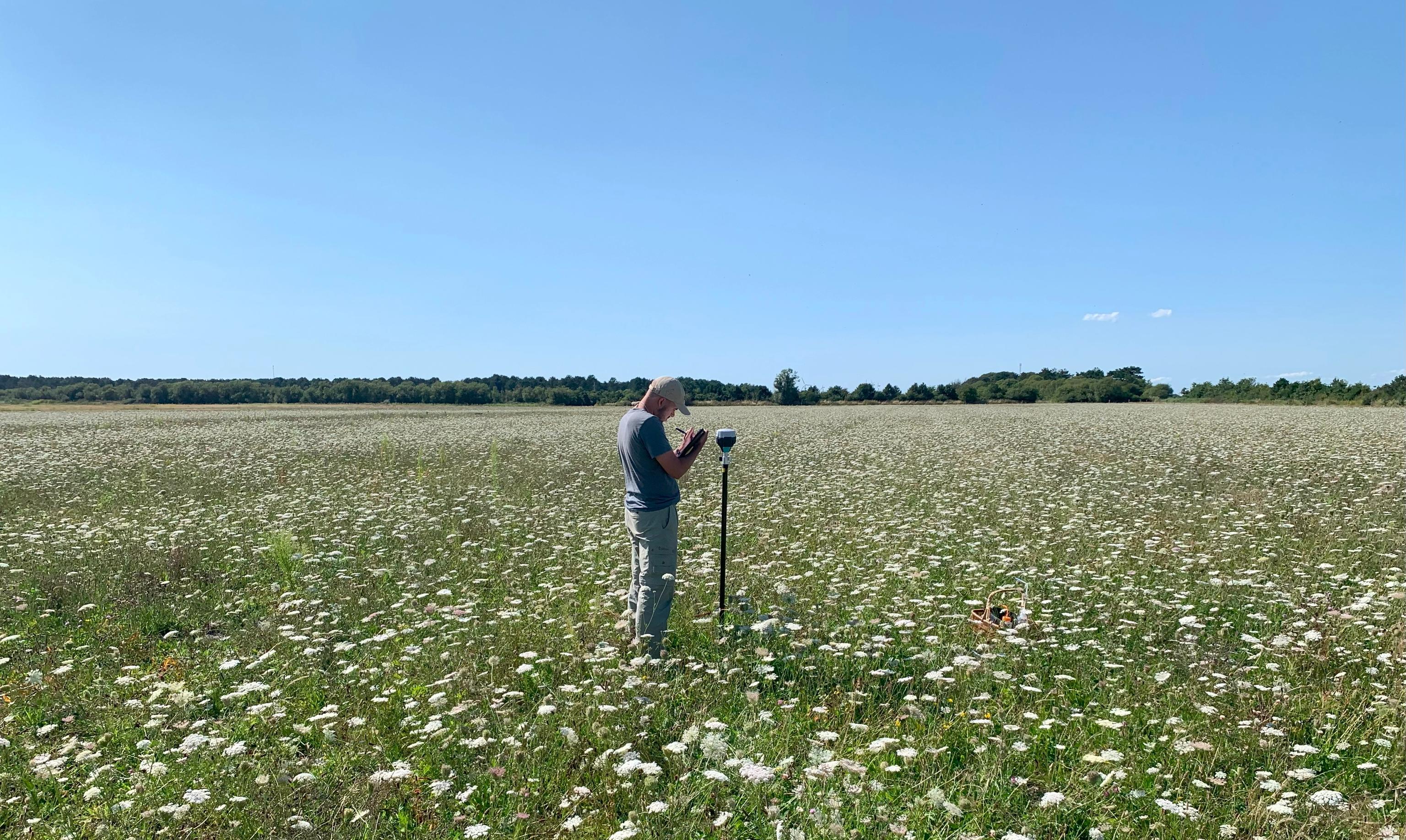Small Predators, Big Role: Frederik Maps the Spiders of Saksfjed Wilderness

Spiders play a crucial yet often overlooked role in ecosystems. In Saksfjed Wilderness, spider specialist Frederik Leck Fischer is currently mapping the region’s spider fauna as part of a systematic biodiversity monitoring project.
“We are facing a biodiversity crisis, and it doesn’t just affect orchids and butterflies. Spiders are severely underrepresented in conservation and management, even though they play a key role in our ecosystems,” explains Frederik Leck Fischer, an ecologist, science communicator, and independent consultant hired by WSP to carry out the monitoring in Saksfjed Wilderness.
Over the course of the summer, Leck Fischer will survey how many different species can be found across 15 research plots distributed throughout the area. The mapping will serve as a baseline measurement, making it possible to track how biodiversity develops in step with ongoing rewilding efforts.
According to the Danish Red List, 540 spider species have been assessed, of which 126 are considered threatened. This means more than one sixth of the species are at risk. Despite this high number, not a single spider species in Denmark is protected by law.
People tend to have strong feelings about the decline of beautiful flowers and butterflies, but when it comes to spiders, the outcry goes silent
“People tend to have strong feelings about the decline of beautiful flowers and butterflies, but when it comes to spiders, the outcry goes silent,” says Leck Fischer.
“But I would argue that spiders can be very beautiful too.”
Miniature Apex Predators
When we think of apex predators, we typically picture large mammals like wolves or lynx—species at the top of the food chain that help regulate population dynamics. The same is true for spiders—just on a smaller scale. Understanding their role is important for ensuring conservation efforts also take less popular species into account.
Very few people in Denmark work with spiders, but according to Leck Fischer, spiders deserve much more attention. They are ideal indicator species—species whose presence tells us something about the condition of a given habitat.
“Many spider species are highly specialized. Some need bare soil, others need knee-high vegetation, shrubs, tree canopies, deadwood bark, open water surfaces—and everything in between. So a high diversity of spider species is a sign of a structurally diverse habitat,” Leck Fischer explains.
Compared to other groups of arthropods, spiders are also more practical to monitor.
“One of the advantages of using spiders as indicator species is that they don’t fly. If the habitat is suitable, they stay put. Unlike hoverflies or butterflies, they won’t just disappear on a windy day. That makes it easier to detect changes over time.”
Promising Early Results
Based on the size and location of the Saksfjed Wilderness, Leck Fischer expects to find more than 100 different spider species over the summer. Just one week into fieldwork, he has already documented 87 species.
This high number, he explains, is due to the area’s favorable conditions. Saksfjed features many of the warm, open habitats that rare spider species prefer—habitats that are in decline across much of Denmark.
Because the area consists of reclaimed seabed, the soil is sandy—good at retaining heat and poor at retaining nutrients. This is an ideal combination for many of Denmark’s more vulnerable species.
“Nutrient-poor habitats attract highly specialized species. I’ve already found a number of demanding spiders linked to warm, open landscapes—as well as some surprising finds, like the Philodromus praedatus, which lives in the canopies of broad-crowned, sunlit oak trees,” says Leck Fischer.
The strong start gives him reason for optimism.
“I also hope we might discover a new species for Denmark. Saksfjed is close to Rødbyhavn, where many new national records have been made. I’d love to find one of the two crab spiders—Thomisus onustus or Xysticus acerbus—which are right on the verge of the Danish border,” he concludes.
Part of a Broader Monitoring Effort
In addition to spiders, the Saksfjed Wilderness is also home to systematic monitoring of plants, insects, bats, small mammals, and birds. You can learn more about the wilderness area's monitoring and research projects here.
Among Leck Fischer’s early finds are: Talavera aequipes, Zelotes electus, Xysticus erraticus, Phlegra fasciata, Drassyllus lutetianus, Micaria subopaca.
